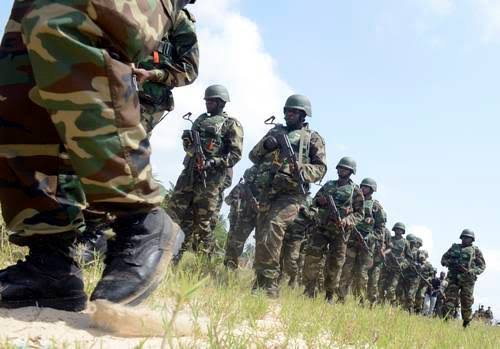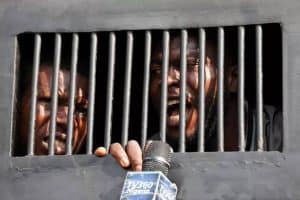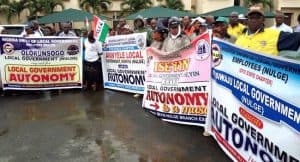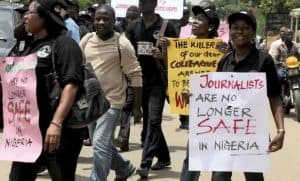
On many occasions, Nigerians have been subjected to killings by the security operatives saddled with the responsibility of keeping their lives safe. Massacre — organised killings of unarmed and helpless citizens — is becoming a common trend in Nigeria. Unfortunately, unlike the Lekki Massacre which got both national and global attention, some of these atrocious acts perpetrated by the Nigerian security operatives amassed little or no attention.
After the country returned to the Republic for the fourth time in 1999, the hope of a democratic government keeping the country safe while safeguarding the rule of law relished the mind of many Nigerians. But it was that very year that the Federal Government would order the Nigerian military to rain bullets on innocent citizens.

Odi Massacre
In 1999, after a fracas between the Nigerian police and the youths of Odi, a predominantly Ijaw community in Kolokuma/Opokuma Local Government Area of Bayelsa state, 12 police officers were killed. In response, the Nigerian army, allegedly acting on the directive of the former president, Olusegun Obasanjo, invaded the community and caused mayhem that led to the death of several Odi people.
Though the number of civilians killed is not certain, however, one of the residents who witnessed and survived the massacre claimed only three buildings remained standing in the entire community after the incident: the bank, the school and the health centre. A rough estimate given by the Human Rights Watch said the soldiers certainly have killed tens of unarmed civilians and that figures of several hundred dead are entirely possible.”
Even though the government put the total casualty at 43, including eight soldiers, Goddey Niweigha, Odi Community Chairman who was the youth leader at the time, said thousands of their people died.
A few months after the incident in 2000, Odi people challenged the Federal Government’s action in court. They won and the court ordered the sum of N37 billion as damages against the government. This was not paid until 2013 when the community agreed to the payment of N15 billion.
Zaki-Biam Massacre
The militia of the Tiv ethnic group was believed to be responsible for the abduction and murder of 19 soldiers, whose mutilated bodies were found in the village of Zaki-Biam, Benue State, on October 12, 2001. According to an official statement, the soldiers had been deployed to the area to restore law and order following clashes between the Tiv and Jukun ethnic groups.
In response, the soldiers from the 23rd armored brigade of the 3rd armored division of the Nigerian army, who were deployed to the area, called for a meeting with the Gbeji villagers, separated men from women, and opened fire indiscriminately on the men. The soldiers then set the dead bodies ablaze.
Further killings took place as soldiers invaded the villages of Vasae, Anyiin Iorja, Ugba, Sankera, and Zaki-Biam, all located in the two local government areas of Logo and Zaki-Biam. More than 100 civilians were reported killed, according to Human Rights Watch.
Reacting to the massacre, Peter Takirambudde, Executive Director of the Africa Division of Human Rights Watch, said though the murder of the 19 soldiers should be condemned, their deaths could not justify the slaughter of innocent civilians.
Ogaminana Massacre
On February 22, 2008, in their manner of protesting the mismanagement of Itakpe Iron Ore by an Indian firm alleged to have a connection with the federal government, the youths of Ogaminana, a community in Kogi state, halted the passage of a truck carrying Iron Ore to Port Harcourt.
Two days later, members of the Nigerian Mobile Police Force were sent to restore normalcy in the community. Unfortunately, an inspector, a sergeant and a corporal were attacked and injured, and one of the officers was abducted. Few days later, the abducted officer was later found dead.
In retaliation, around 8:30 pm on February 26, 2008, officers from the Nigerian Police Force ran on the community, killing civilians and burning houses. Over 50 people were reported killed in the massacre.
Pro-Biafra Massacre
On a Biafra Remembrance Day in May 2016, Amnesty International revealed, a rough estimate of about 1000 members of the Indigenous People of Biafra (IPOB) gathered for a rally in Onitsha, Anambra State when the officers of the Nigerian Army shot at the people in several locations.
Even the night before the Remembrance Day, “the security forces raided homes and a church where IPOB members were sleeping.”
On 30 September, 2016, Amnesty International claimed, the findings of the investigation into the massacre which revealed over 150 deaths of peaceful protesters were shared with the Federal Government.
“Responses were received from the Attorney General and Inspector General of Police but neither answered the questions raised in the report,” Amnesty International said.
Zaria Massacre
Members of the Islamic Movement of Nigeria, while performing a religious rite, have refused to clear the road for the passage of the military convoy carrying the country’s Chief of Army Staff. The military claimed the group had attacked the convoy in an attempt to assassinate the Army Chief.
While some members of IMN were armed with batons, knives, and machetes, the group had denied the allegation levied against him by the army of attempted murder.
Following a confrontation, between12 and 14 December, 2016, Amnesty International revealed that not less than 350 people must have been killed in Zaria, Kaduna state, and several of these bodies were buried by the army in an attempt to cover up the incident.
Bonta Massacre
After a military commander and 11 officers of the Nigerian Army were killed by the youths of Bonta, a community in Konshisha, Benue state, for allegedly supporting and supplying arms to their rival group, in April 2021, the Nigerian army deployed hundreds of soldiers to rain mayhem on the community.
The military denied any hostile action on Bonta, however, an investigation by the Foundation for Investigative Journalism revealed not less than 51 deaths connected to the incident.
The investigation revealed that “about 34 percent of the massacred villagers were children and adolescents of ages between 0 – 17. About 42 percent were youths of ages 18 – 49, while about 24 percent were elderly persons.
Unlike the Lekki Massacre, most killings perpetrated by the Nigerian security operatives do not often get global attention. And apart from the retaliatory nature of the attacks, one common feature in the massacres is that the perpetrators are often left unpunished.







